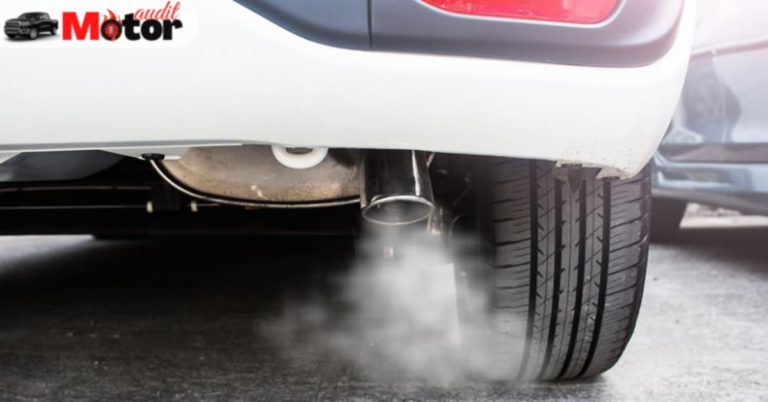5 Symptoms For Detecting Too Much Fuel Pressure to Carb
A bad fuel pump or bad regulator lets the fuel pressure increase to an unbearable level.
As a result, injectors can’t function properly affecting the performance of the engine. It cannot only damage other parts but also lead to fire hazards.
So, one should know too much fuel pressure to carb symptoms to keep the car and themselves safe.
Signs of Too Much Fuel Pressure to Carb?Engine flooding is the primary result of too much fuel pressure on the carburetor. So, seeing the signs of flooding will confirm this issue. You will notice that the engine is cranking too fast with an unusual sound after turning the key (can be a whirring sound).
Also, one can smell petrol around the exhaust. Another common sign is the car not starting or cutting out after starting briefly.
What Are The Symptoms Of Too Much Fuel Pressure to Carb?
Other than those, there are some other symptoms. Here, I am going to describe them all to educate you on how to detect too much fuel pressure to carb.
1. Cylinder Wall Scoring
The sign I have told you can be detected from the outside. But getting informed about cylinder wall scoring requires internal inspection.
Due to too much fuel pressure (around 8 PSI or above), the lubricating oil gets washed away.
Another way to know about this particular incident is by doing a compression test.
A scored wall can affect the O-rings and let combustion gases out of the combustion chamber leading them to the crankcase.
Those who are using a performance carburetor should contact their manufacturer.
Because they usually have a pressure regulator that keeps things normal. Ensuring the proper working of that controller often solves the issue.
2. Problematic Running
Some people noticed their car acting weirdly while parking. It starts to run rough which is not usual.
After letting the engine sit there for an hour or more, and trying to start again, things don’t work out smoothly. They faced a hard time turning the engine on.
Somehow managing to start, the car runs rough again and does not idle smoothly.
Doing some inspection, they found out that the fuel pressure was not optimized according to the manufacturer’s recommendation.
Another thing you may notice is that the needle on the gauge bouncing like crazy.
3. Unusual Oil
While changing the oil of your car, carefully notice the color and consistency.
A car owner mentioned that he saw pitch-black oil color with the consistency of milk. Also, it smelled like gas.
That can be the cause of excessive fuel pressure on the carburetor.
Now, it can be caused by several issues. The only way to pinpoint the reason, you have to perform a compression test.
Take it to a servicing shop and see whether the PSI reading is within the range. Also, check the fuel pressure.
Seeing any value above 8 makes it a serious issue that needs immediate fixing.
4. Poor Mileage
That is right. Too much oil pressure means that the carburetor is getting more fuel than it needs to run.
As a result, you won’t get the same mileage as you used to be. If the problem stays unattended for too long, it will cause more damage to the other engine parts.
5. Overheating and Loss of Power
In extreme stages of the problem, your car’s engine will overheat.
Also, it is possible to experience a sudden loss of power when the car is carrying a heavy load like a trailer. This phenomenon is commonly seen on loaded vehicles going uphill.
What to Do When You Detect Too Much Fuel Pressure to Carb?
Obviously, you have to adjust the pressure as per the owner’s manual. If you can’t do it yourself, take the car to a mechanic or repairing shop.
Also, install a fuel pressure regulator so that it doesn’t happen again.
I am emphasizing installing the controller because maintaining the right pressure is very important.
Too low oil pressure can lead to dryness. And, you have already known the aftermath of too much pressure.
Here, let me tell you the steps for replacing the pump and regulator in the easiest way possible.
Replacing Fuel Pump
Contrary to popular belief, replacing the fuel pump of your car is fairly easy.
I am not describing anything here because the process varies based on car models.
There are plenty of YouTube videos on the topic. Search with your car’s model and follow the steps.
Pro Tip: Make sure that you are not using any power tool near those parts. Because a spark can be enough to cause unimaginable damage.
Replacing Fuel Pressure Regulator
- Firstly, you have to scan the vehicle’s computer system for any error codes.
- Secondly, inspect the regulator for possible leaks and irregular performance.
- After that, see whether there are any broken vacuum lines.
- Next, use the right tools to remove and replace the bad part with a new one.
- Then, change contaminated oil and clear the error codes from the diagnosis.
- Finally, test drives the vehicle to see whether the problems are gone.
Pro Tip: Always try to keep the fuel tank 3/4th to all the way full. Because it works as a coolant, keeps the pressure optimum, and the lack of it causes lots of issues.
Is Fixing Too Much Fuel Pressure to Carb Typically Expensive?
There can be two scenarios. First, the fuel pump may need repairing or replacement. And second, repairing or installing a pressure regulator.
For the first case, the cost varies from engine to engine. On average, you may have to spend somewhere between $750 and $1900.
That is the cost of installing a new one.
On the other hand, the same conditions apply for repairing or installing a new regulator. The part can cost you somewhere between $100 to $1000.
Also, calculate the installation or servicing charge separately for both cases. From the figures, you can consider it expensive.
Final Thoughts
The importance of knowing too much fuel pressure to carb symptoms can be summed up in a single line.
It is the cause of poor engine performance, and lead to fire hazard.
So, take action as soon as you see any sign or symptom while running or servicing it.
- Read Also>> Radiator Leaking From Bottom: (Causes & Possible Fix)
- Read Also>> 5 Symptoms of Bad Fuel Tank Selector Valve You Should Know
- Read Also>> 5 Common Symptoms To Detect A Bad Fusible Link [Explained]
- Read Also>> 5 Symptoms To Detect A Bad MSD Ignition Box (Explained)
- Read Also>> What Causes Crankshaft Sensor To Go Bad?



